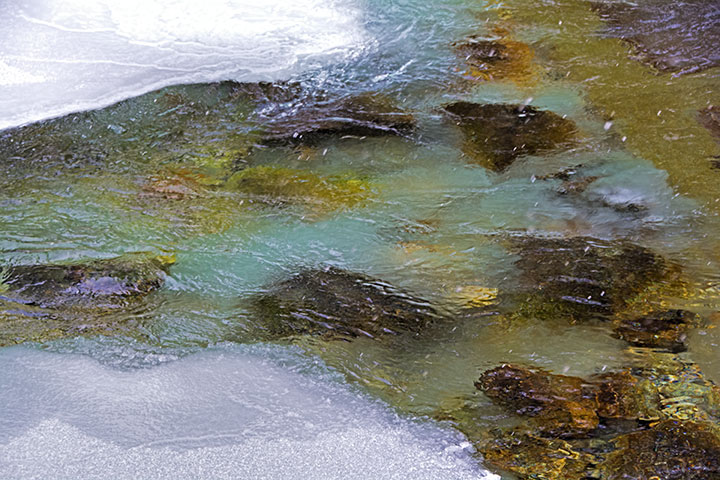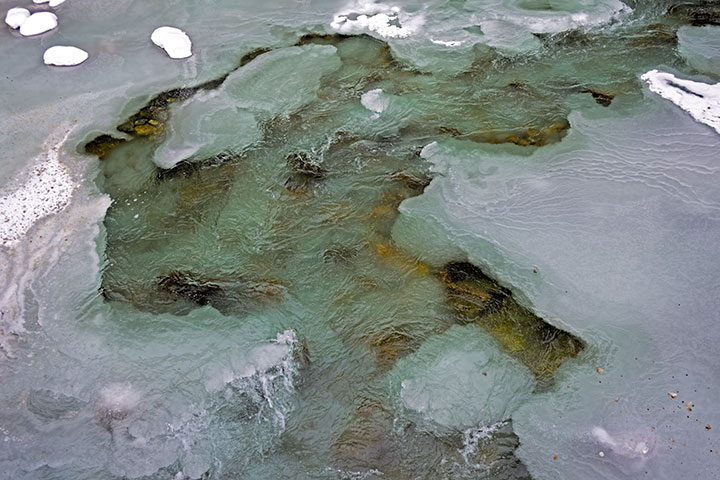Anchor ice (also called bottom-fast ice) is ice attached (anchored) to the bottom of a stream.
At first blush, it seems rather odd that any ice should form on the bottom of a water body. After all, for ice to form, the water temperature must be 0C (or slightly less). But, water with such a freezing temperature is not as dense as the somewhat warmer water with a temperature of 4C. Consequently, the warmer water sinks to the bottom and the freezing water rises to the top. So, it is at the surface of ponds, lakes, and oceans where ice forms. (If the water is shallow enough, freezing that starts at the top might progress right to the bottom, but that is a different matter than ice that builds up on the bottom).
The game changes slightly in a rapidly flowing river or creek. Turbulence mixes the water so thoroughly that density stratification does not take place. During particularly cold weather (such as at present) the stream cools, but being well stirred, it does so fairly uniformly. The temperature of the whole stream drops to 0C and now ice begins to form as tiny crystals or platelets throughout the depth of water. As these ice fragments are carried along in the turbulent waters, some brush against the stream bottom and stick, adhering first to rocks and subsequently to other ice. This ice that collects on the stream bottom is the anchor ice; it is quite porous as it is a composite of shards.
The ice at the upper and lower left of this picture is on the surface of the creek. It has formed on the creek edges where the water is shallower and the flow gentler. In the main channel, between these edges, a creek bottom of sand and rocks is visible. Locally, adhering to some rocks is the distinctly greenish anchor ice.
Anchor ice is occupying most, but not all, of the channel between the surface ice.
Very little of the creek bottom is seen in this picture. Surface ice occupies the shallow edges of the creek and anchor ice covers most of the stream bottom in the channel.

As often happens when I view your photos and read your descriptions and explanations I learn something new. Thank you, Good Teacher; I am always happy to learn. Fr. Jim
Interesting. I love the information you share and the pictures are great. I will stay alert for this in future. Thanks for making me aware Alistair.
Love the combination of jade green and ochre hues in the first photo.
I wholeheartedly agree with the previous commentators, the descriptions are as interesting as your photos – I also learn something new! This was a particularly interesting post!
I will be 70 next year and I didn’t know that. Interesting stuff Alistair.
I’m ceaselessly fascinated by ice manifestations. This will inform my eye as I delectate. And the colours, now I have to get myself off to the water’s edge.
Who knew!! Fascinating and educational as always, Alistair. Thank you for your blog. I haven’t read the next one about anchor ice’s effect on Dippers, but I can see that it certainly would cut down on available goodies.